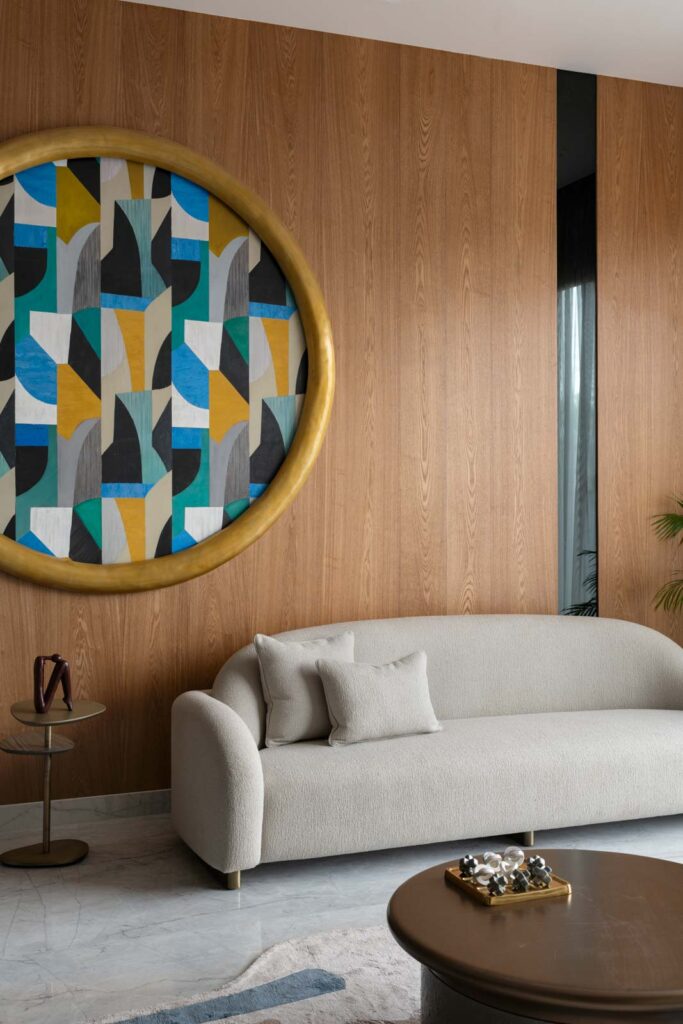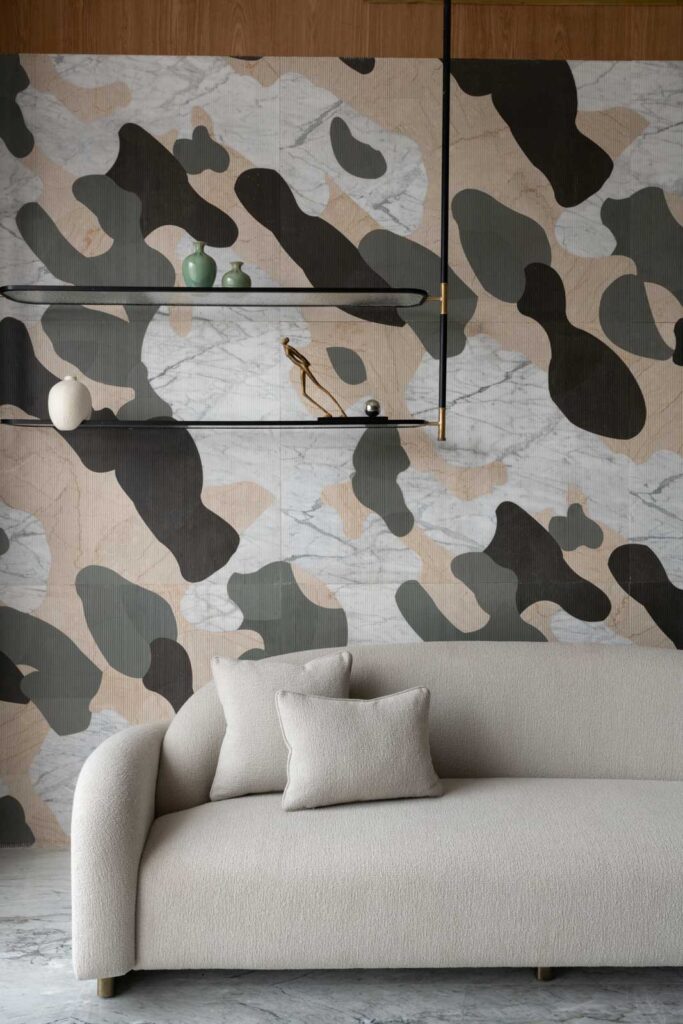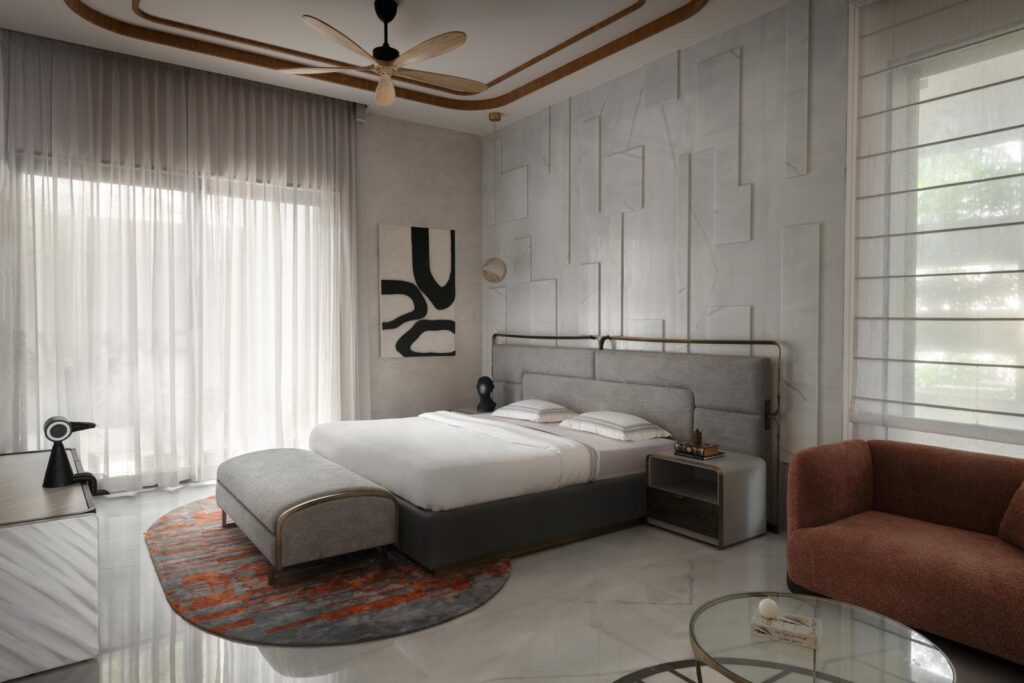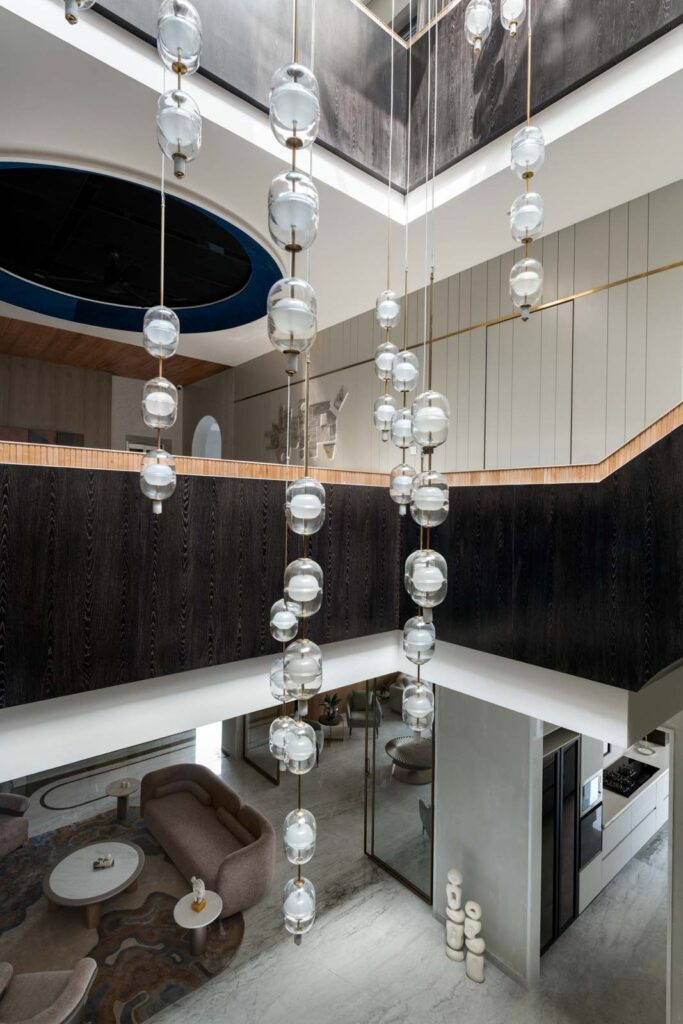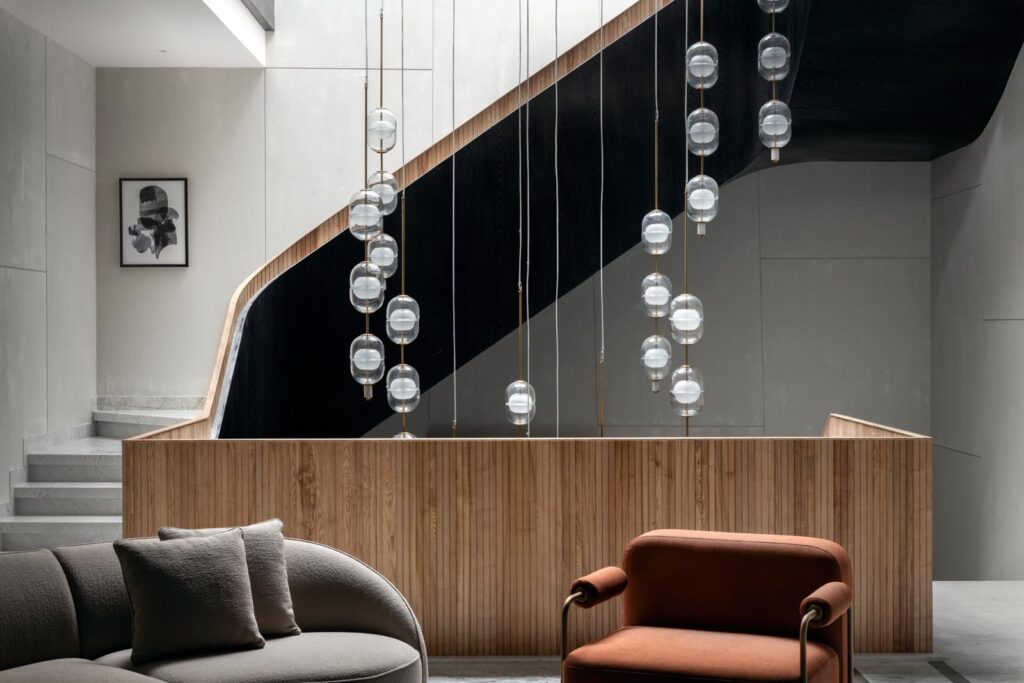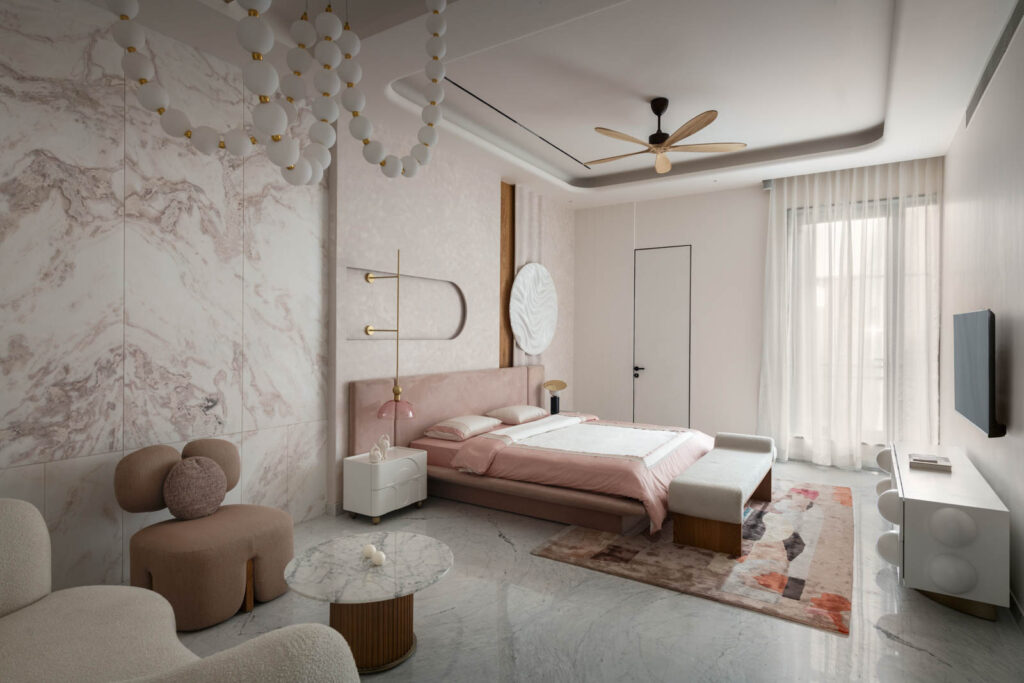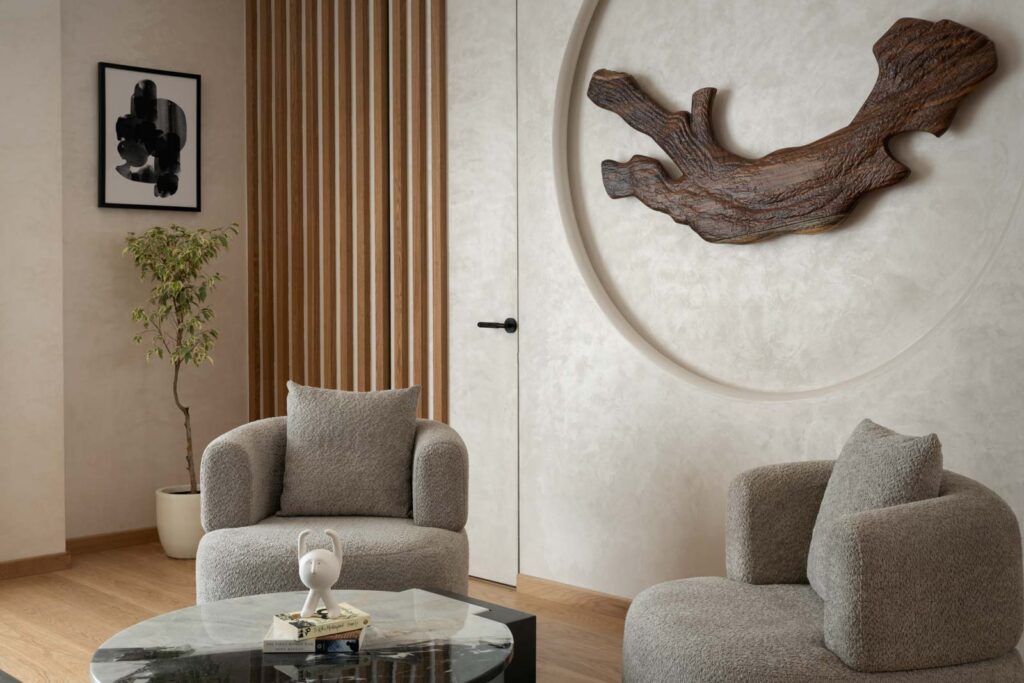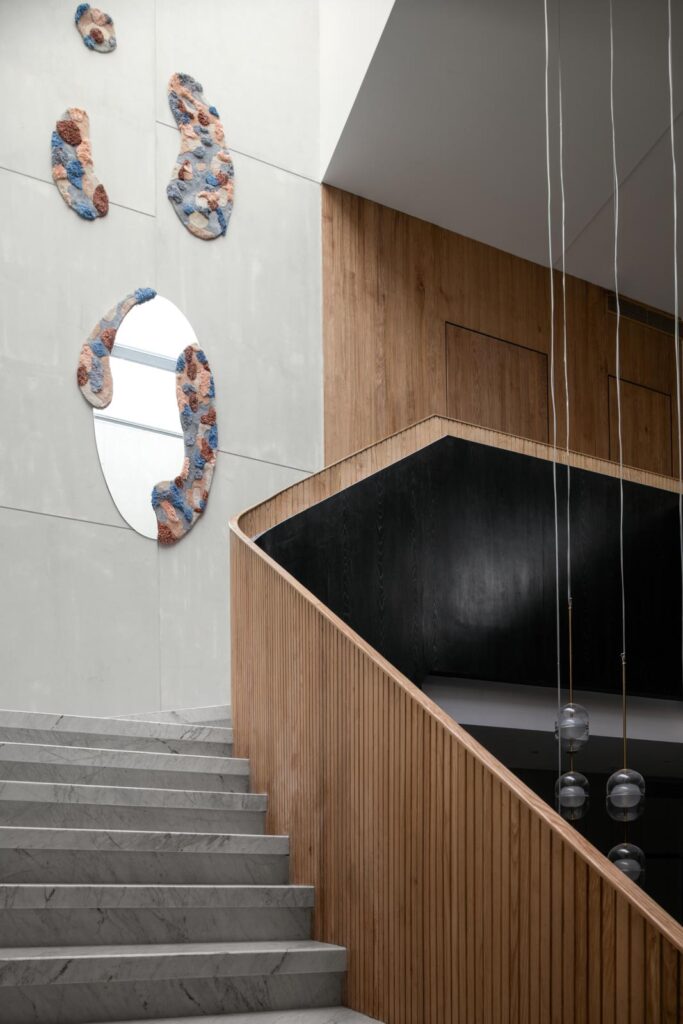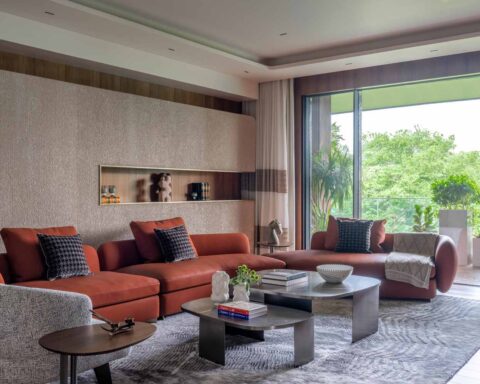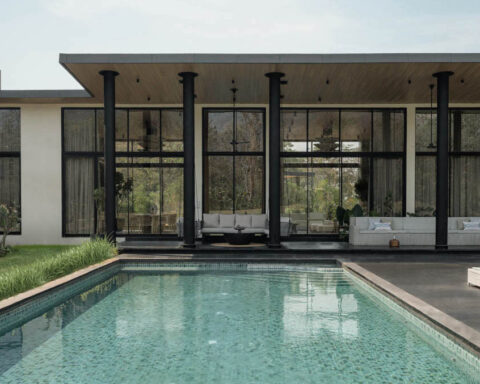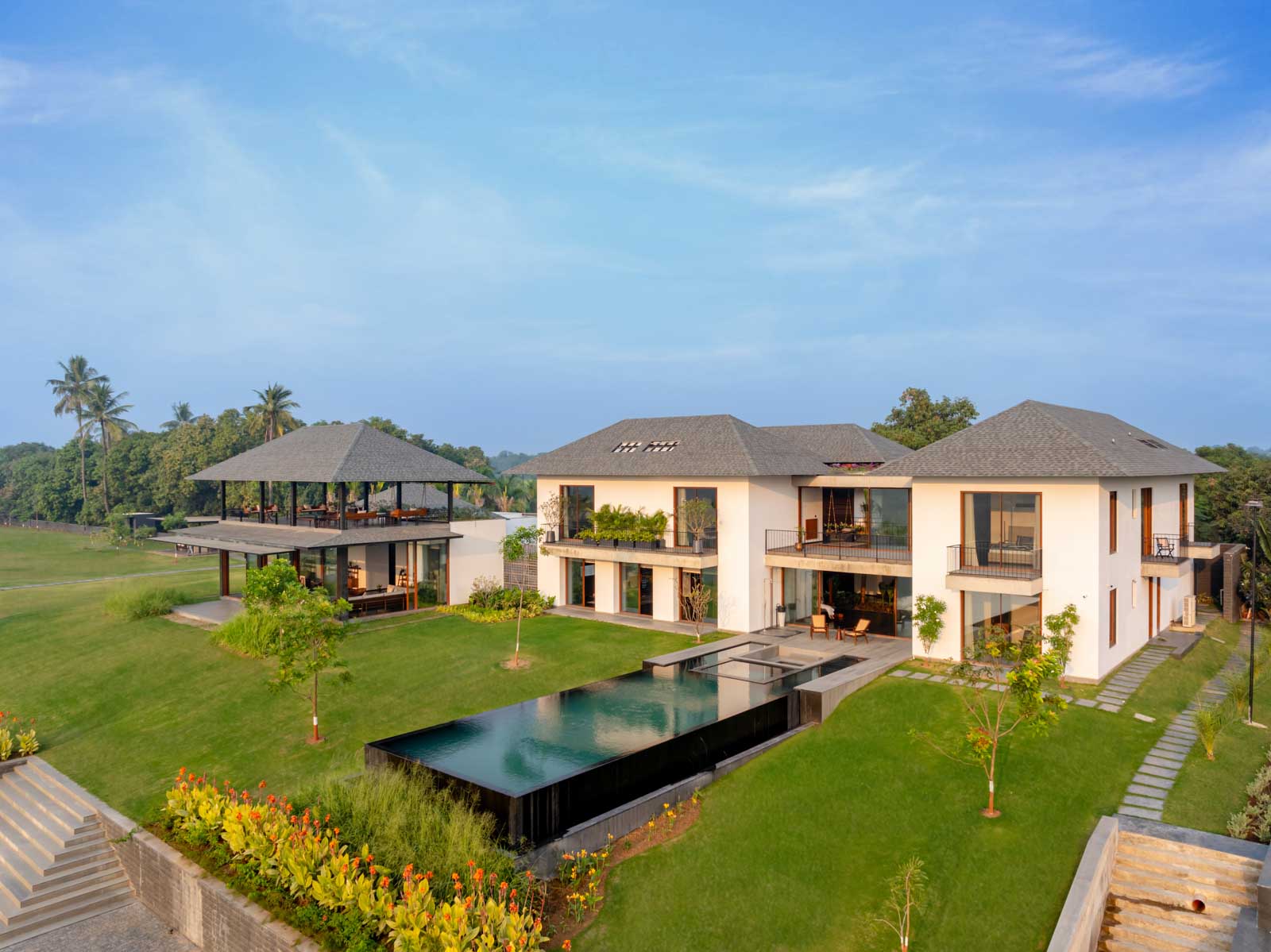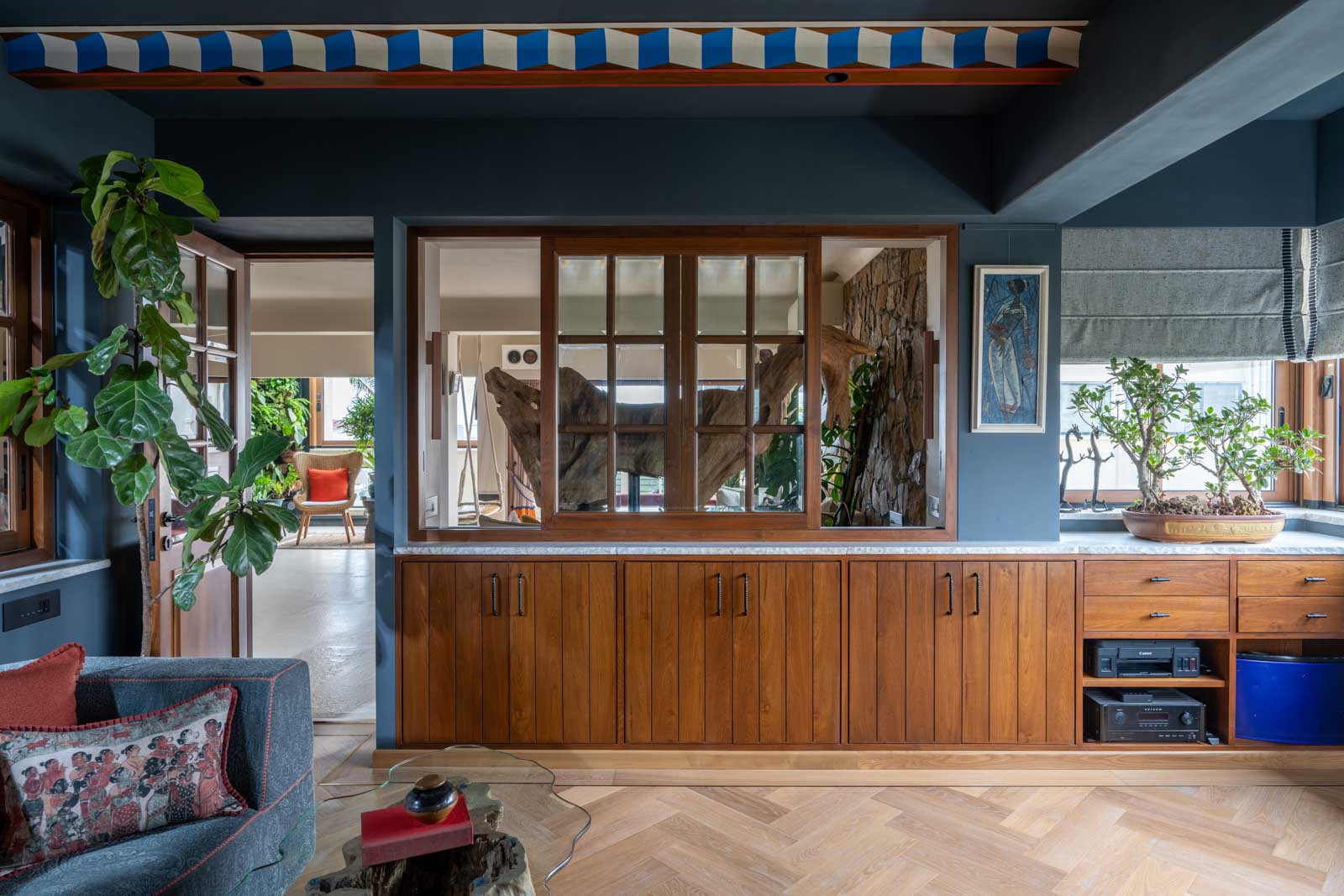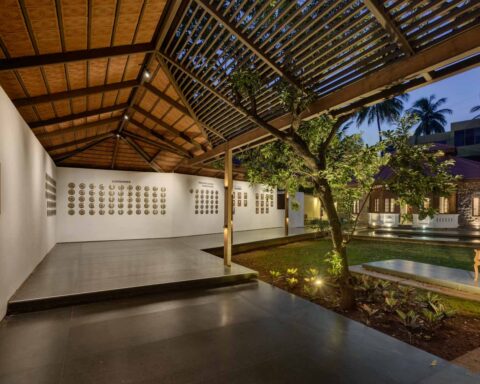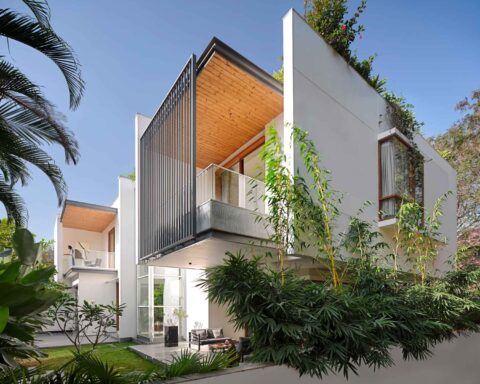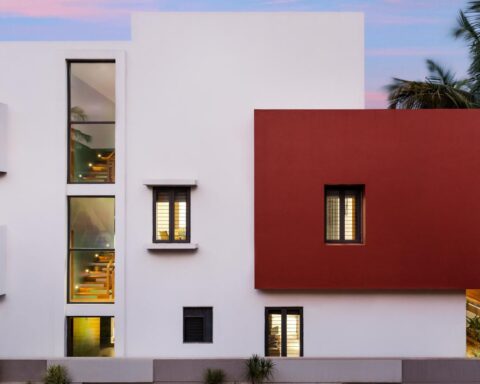The House of Dancing Screens revolves around the beauty of the pivotal screens and their graceful interplay of function, form, and movement, creating an ever-changing dynamic concept that gives the house its distinctive character and name.
Project Name : The House of Dancing Screens
Project Location : Ambala, India
Architect/Interior Designer : Spaces Architects@KA
Principal Architect/Designer : Kapil Aggarwal
Photographer: Bharat Aggarwal
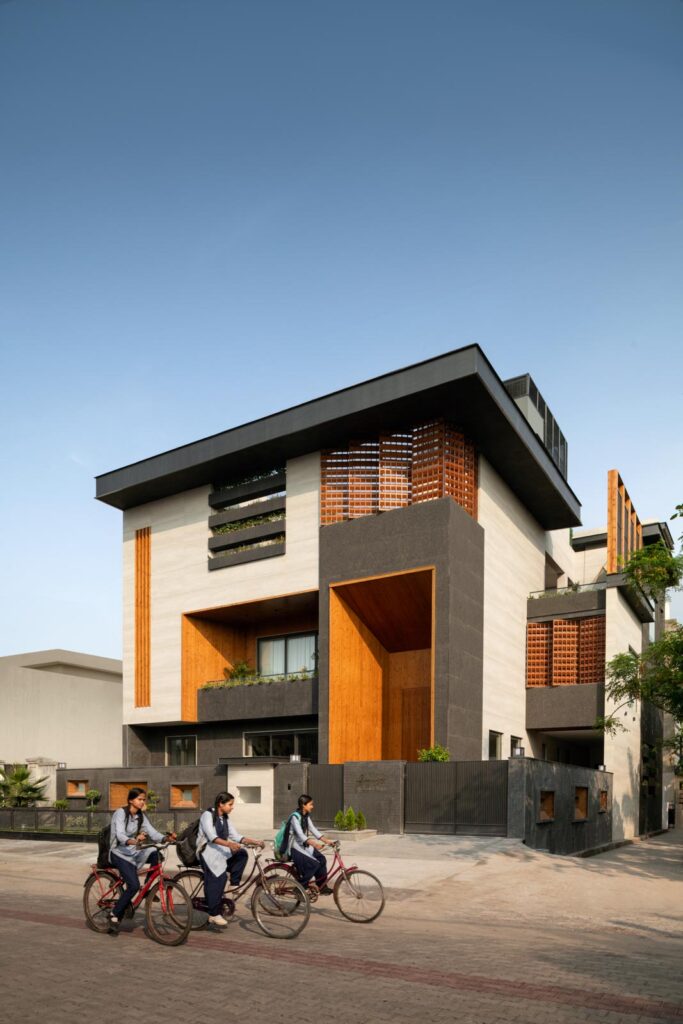
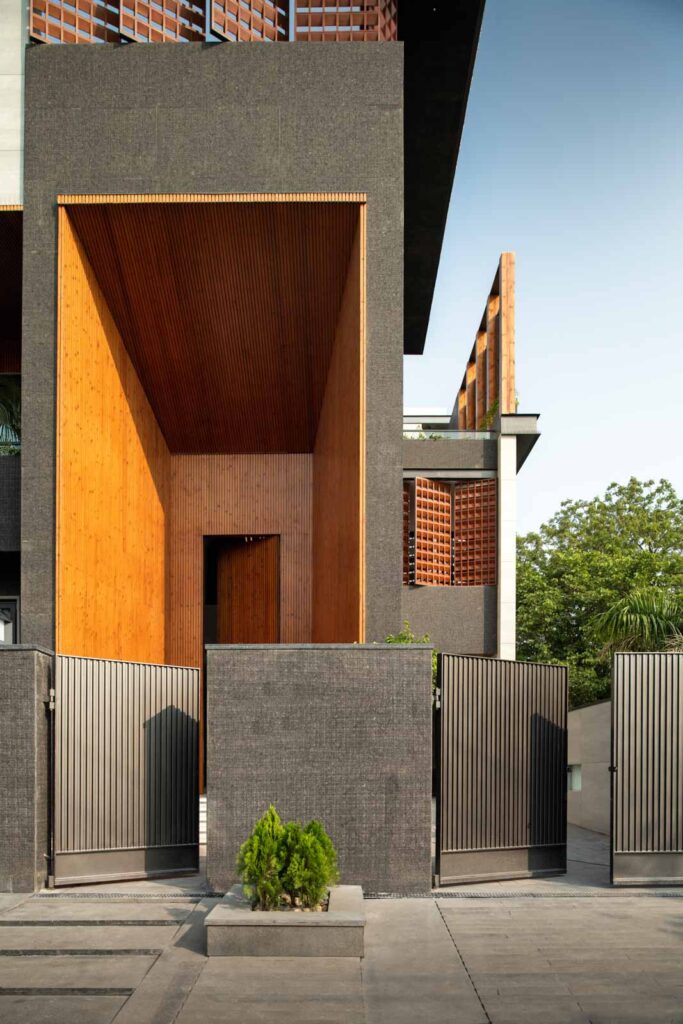
Text description by the Architects.
The House of Dancing Screens is a private residence designed for a family of five, nestled in a tranquil area in the heart of Ambala, Haryana. The project was conceived with the vision of creating a versatile and well-balanced home that meets the unique needs of each family member while fostering a sense of togetherness. The architects sought to make a statement of grandeur in an otherwise modest setting while staying true to the client’s preference for a “living big” lifestyle. The Architects aimed not only to create a statement of grandeur in the otherwise humble setting but also to comply with the client’s style of “living big”.
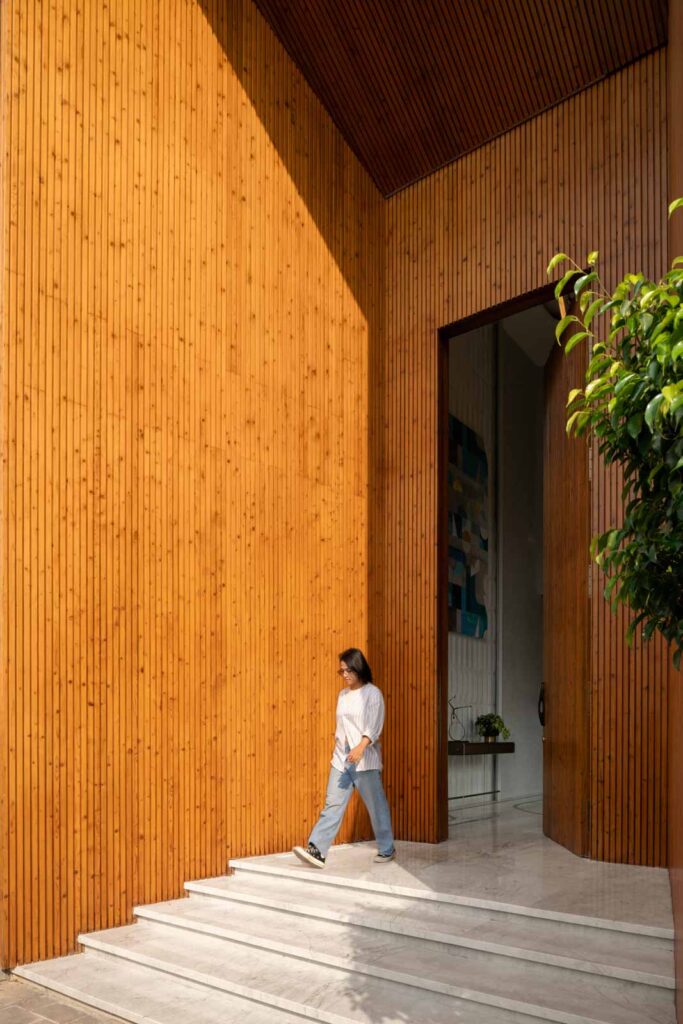
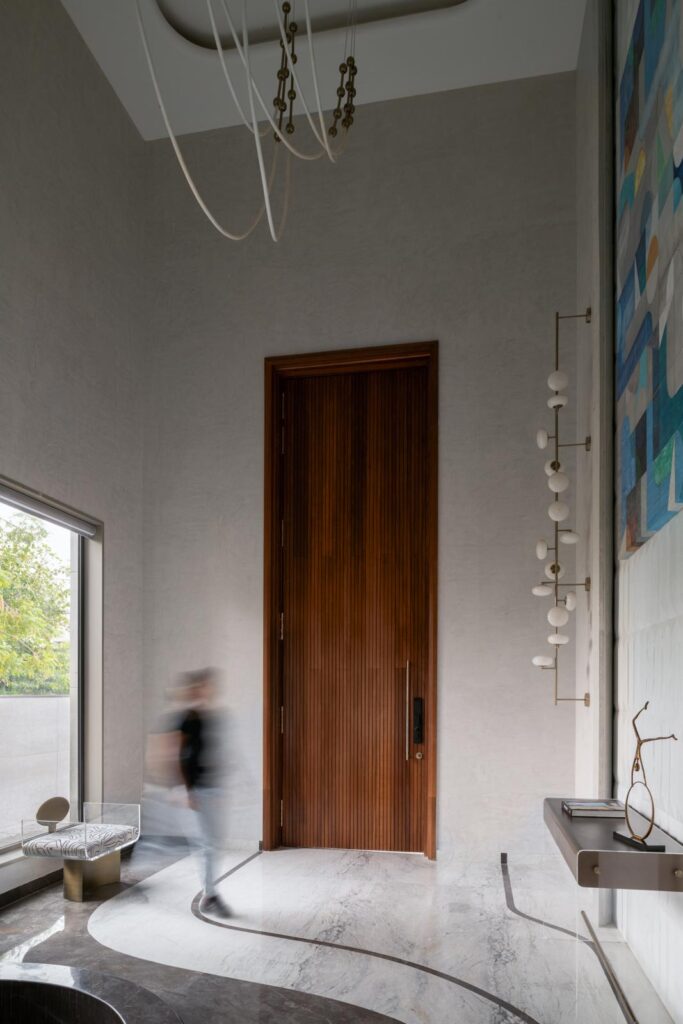
These screens are not mere partitions but elegant elements that redefine the space around them. Crafted with precision, they revolve smoothly on their pivots, offering flexibility in how spaces are used and experienced. Their movement along the wind is reminiscent of a dance—fluid, purposeful, and rhythmic—allowing the house to adapt to the needs and privacy of its occupants at any given moment.
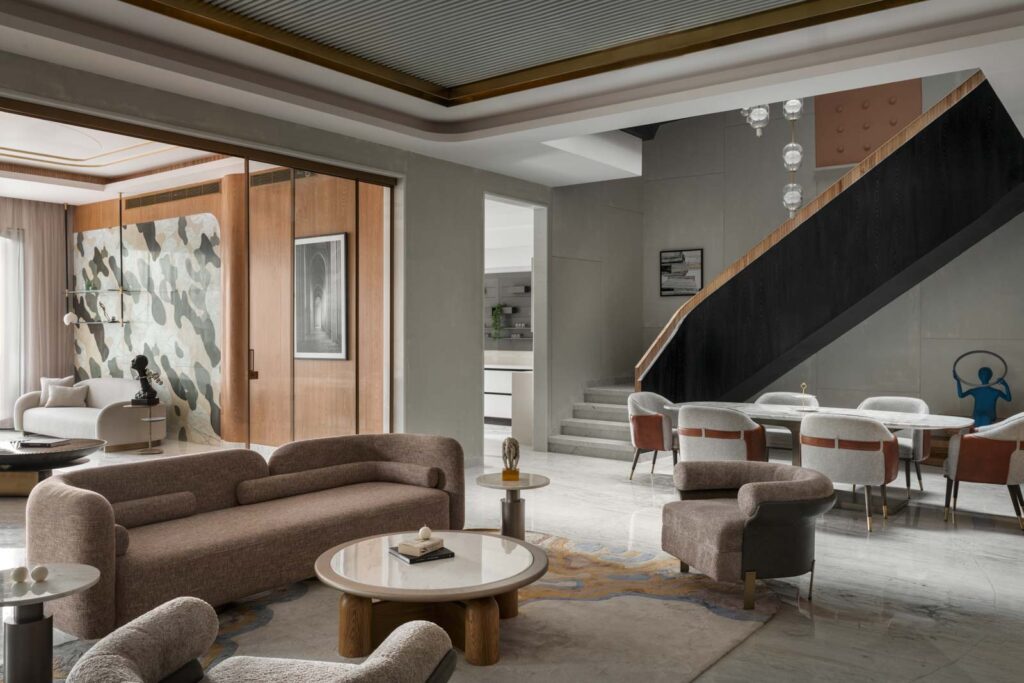
The house is envisioned as an open floor plan emphasizing the interconnectivity of spaces. Each level is meticulously designed to cater to the unique lifestyles and age groups of the family, with a family lounge on every floor serving as a central gathering hub. From this lounge, private areas extend outward allowing each bedroom to enjoy the luxury of its private balcony.
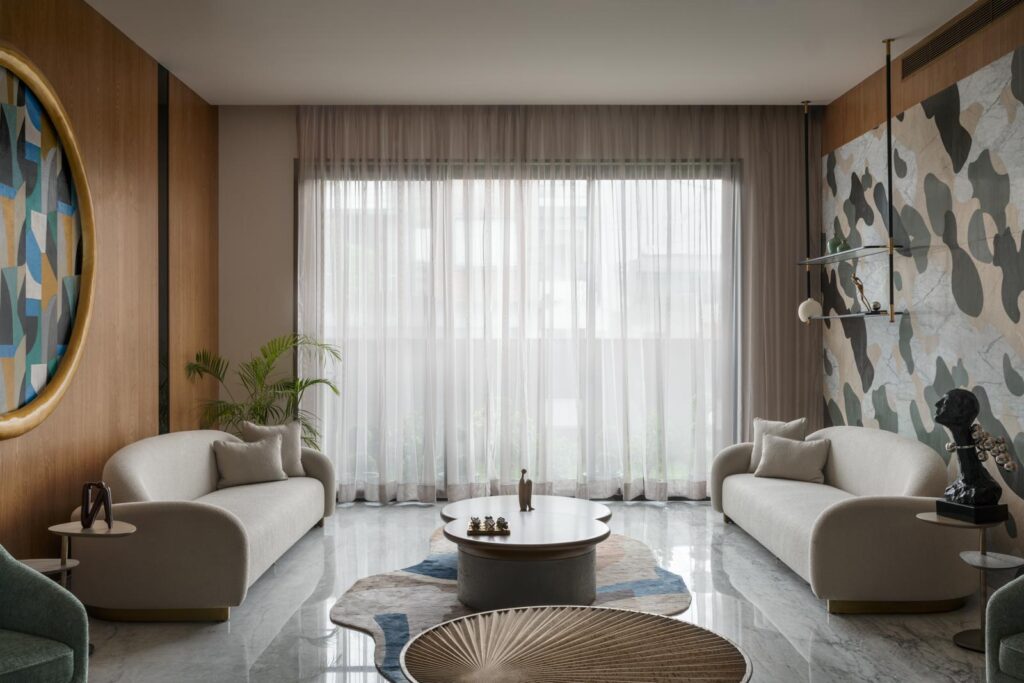
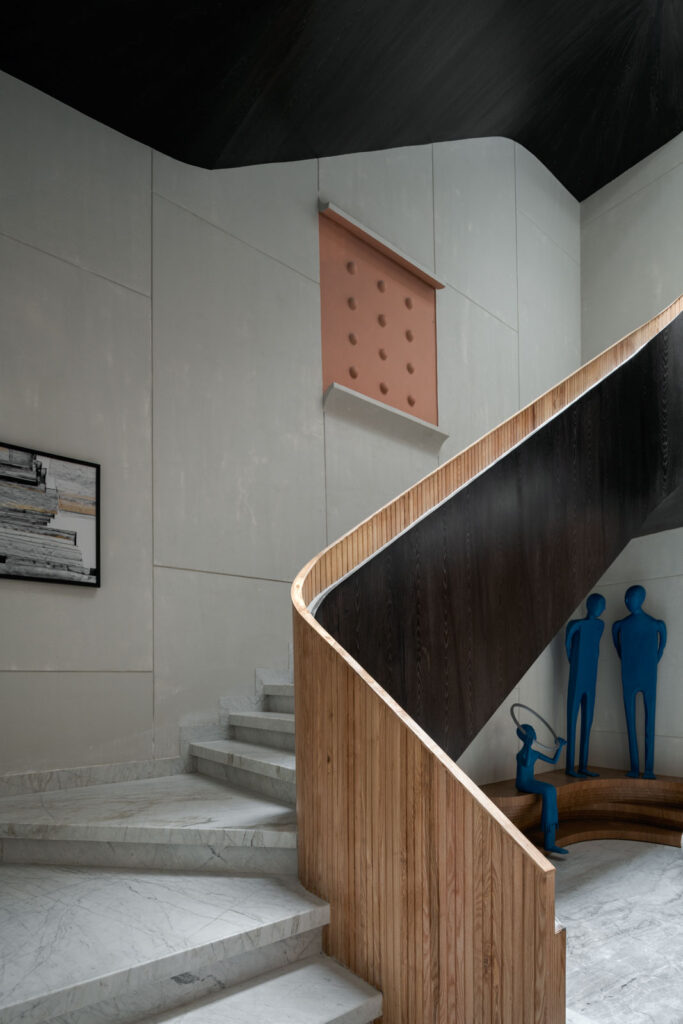

On the ground floor, a formal lounge seamlessly flows into the drawing room and dining area. The dining space, together with a gracefully curved staircase, opens up into a triple-height cut-out that floods all three floors with natural light throughout the day. This staircase serves as the architectural thread that ties the three floors and their lounges together. This level also houses the master bedroom and the parents’ bedroom. The kitchen opens into a sunlit lawn in the front, creating the perfect setting for morning tea, while the rear lawn offers an exclusive retreat for the master bedroom.
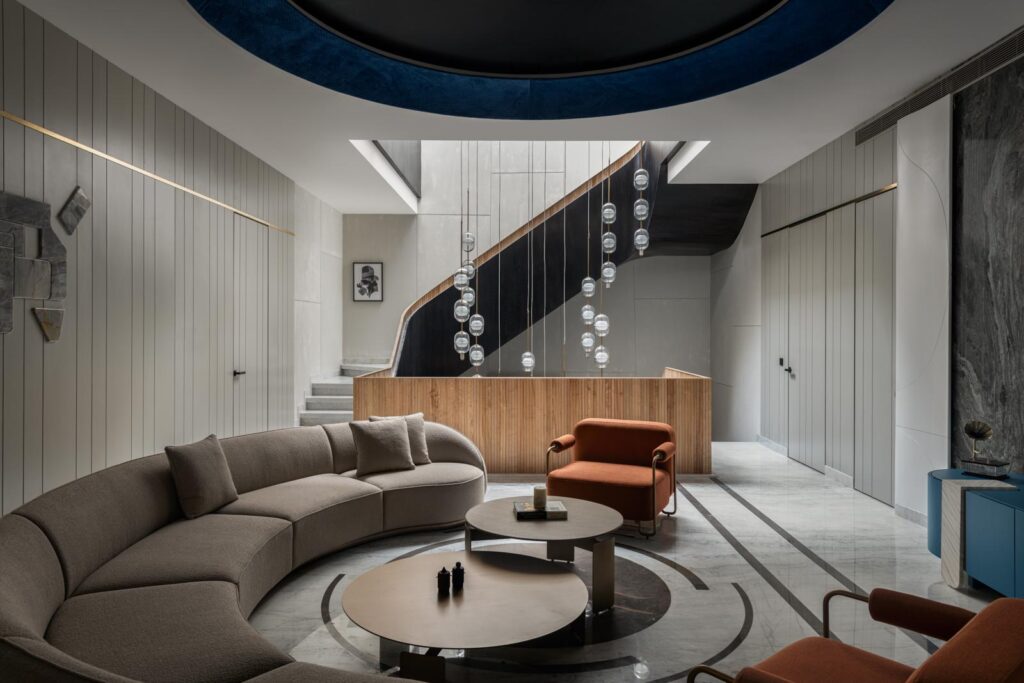
The first floor is thoughtfully crafted for the son and daughter, featuring a spacious lounge connected to the rest of the house through the staircase. This lounge provides them with a space to host gatherings and leads to their bedrooms, as well as a guest room. When designing the interiors, the daughter envisioned an elegant pink and white room, while the son preferred an earthy palette. The mood board was carefully curated to reflect their distinct tastes.

Vibrant colors play a key role in shaping each space, setting the tone for the interiors.
The third floor is dedicated to the family’s individual and collective activities. It features a gym with a private terrace garden that leads to the main terrace. A rooftop swimming pool with its own terrace garden and dancing screens serves as a focal point, extending into a large family lounge and entertainment area.
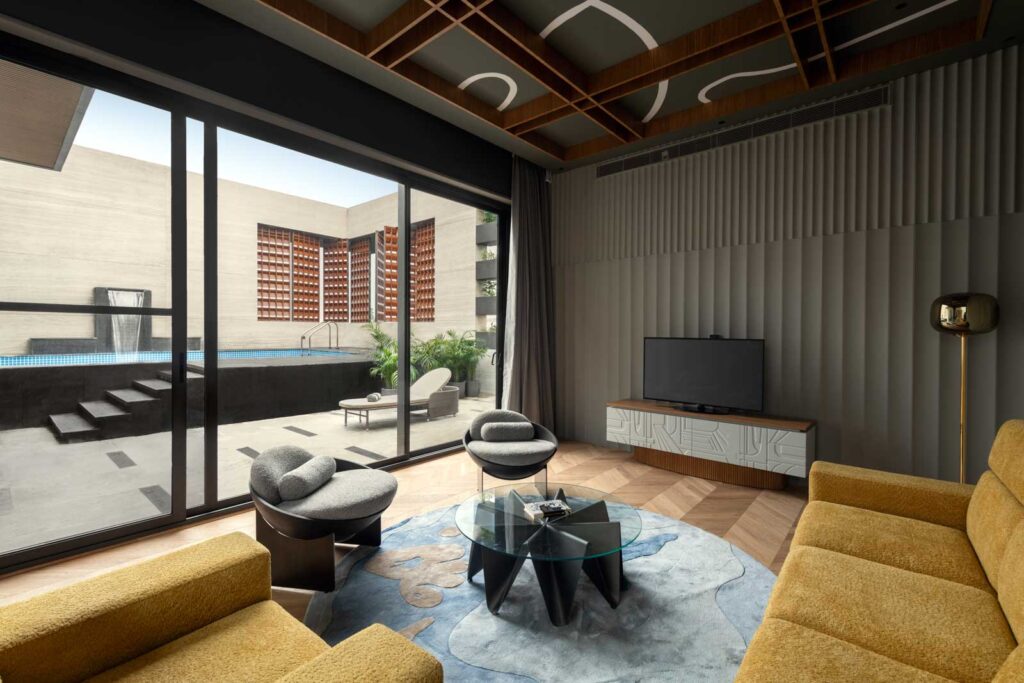
The House of Dancing Screens is more than just a residence; it is a carefully crafted sanctuary that harmonizes individual preferences with collective living. Through its open floor plan, interconnected spaces, and thoughtful design, the house brings the family together while honoring their unique lifestyles. With an emphasis on natural light, vibrant interiors, and both private and shared spaces, this home is a testament to the balance between grandeur and warmth, where every corner serves as a reflection of the family’s shared journey and cherished moments.
Project Name : The House of Dancing Screens
Project Location : Ambala, India
Architect/Interior Designer : Spaces Architects@KA
Principal Architect/Designer : Kapil Aggarwal
Photographer: Bharat Aggarwal







